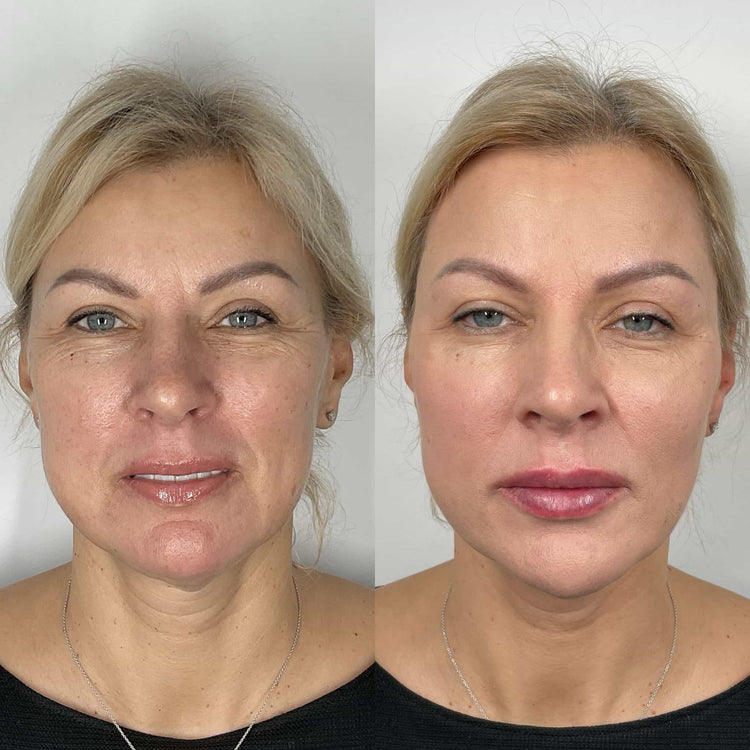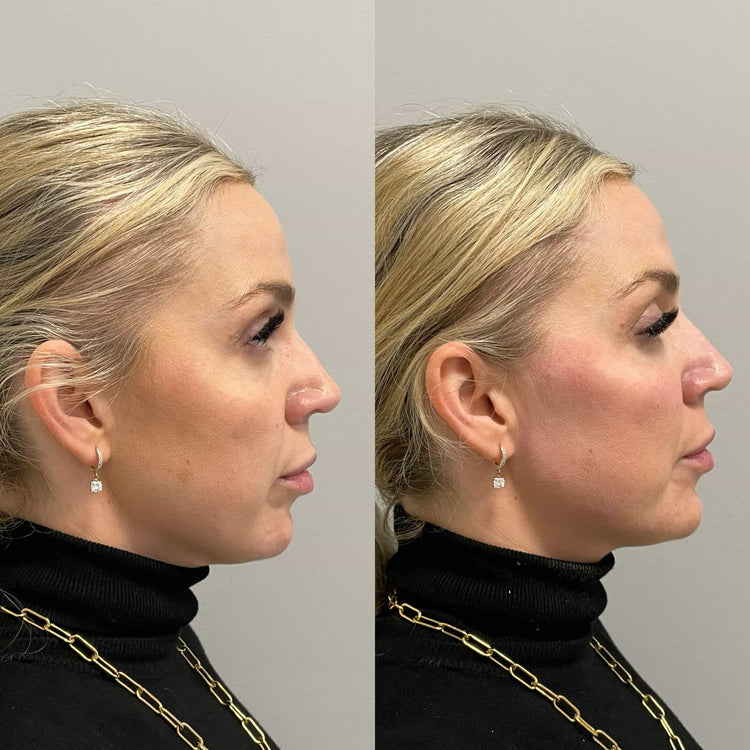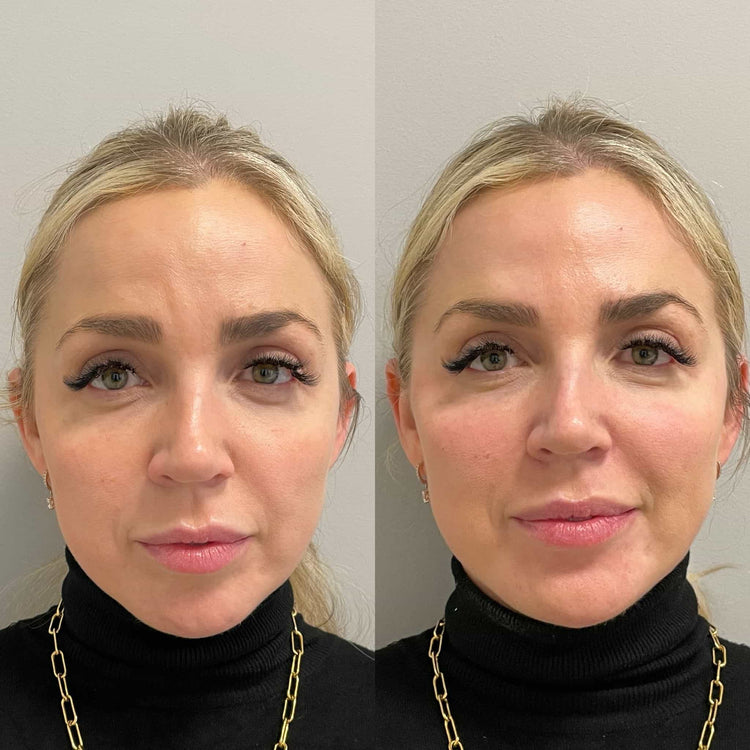The Science Behind Liquid Facelifts
Liquid facelifts offer a non-invasive alternative to traditional surgical procedures, aiming to restore facial volume and contour. By strategically injecting hyaluronic acid fillers into specific areas of the face, this treatment can diminish the appearance of wrinkles, plump up sunken cheeks, define jawlines, and create a more youthful overall look.
Dermal Fillers and Hyaluronic Acid
Hyaluronic acid is a natural substance found within the body, primarily in connective tissues like skin. It acts as a humectant, attracting and retaining water molecules, thereby keeping the skin hydrated and plump. As we age, our hyaluronic acid production naturally declines, leading to wrinkles, dryness, and loss of facial volume.
Liquid facelifts utilize dermal fillers, which are composed of hyaluronic acid gel. These gels come in various formulations with different densities and viscosities, allowing practitioners to target specific areas and achieve desired results. Injecting these fillers into the deeper layers of the skin effectively replenishes lost hyaluronic acid, restoring volume to sagging cheeks, smoothing wrinkles, and enhancing facial contours.
The treatment is relatively quick and minimally invasive. After topical anesthesia is applied, a fine needle delivers the filler precisely into designated areas. The results are typically immediate and can last for several months to a year, depending on the type of filler used and individual factors.
Volume Restoration Process
Liquid facelifts leverage hyaluronic acid, a naturally occurring substance in the body, to restore facial volume. Hyaluronic acid acts as a humectant, drawing water into the skin and keeping it hydrated and plump. As we age, our bodies produce less hyaluronic acid, contributing to wrinkles, dryness, and volume loss.
Dermal fillers containing hyaluronic acid are injected into specific areas of the face during a liquid facelift. Different formulations of these fillers vary in density and viscosity, allowing practitioners to target specific concerns such as sunken cheeks, smile lines, or thin lips.
By replenishing lost hyaluronic acid, these injections plump up the treated areas, smoothing wrinkles, enhancing contours, and creating a more youthful appearance. The treatment is typically quick and minimally invasive, with results that are often visible immediately and can last for several months to a year.
Procedure Details

Procedure Details outlines the precise steps involved in a liquid facelift, explaining how this non-surgical approach utilizes hyaluronic acid fillers to restore facial volume.
Consultation and Assessment
The procedure begins with a thorough consultation and assessment. During this initial meeting, a practitioner will discuss your aesthetic goals, medical history, and any potential risks or contraindications. They will examine your face, taking note of areas where volume loss is most prominent and determining the ideal placement for filler injections.
Following the consultation, topical anesthesia is applied to numb the treatment area. Using a fine needle, the practitioner will carefully inject hyaluronic acid filler into specific layers of the skin. The amount and type of filler used will vary depending on individual needs and desired outcomes.
After the injections, the treated areas may be gently massaged to ensure even distribution of the filler. Cold compresses can also be applied to minimize any potential swelling or bruising. Most patients experience minimal discomfort during and after the procedure.
Injection Technique
Injection Technique is a crucial aspect of achieving optimal results with liquid facelifts. Practitioners employ precise injection techniques to deliver hyaluronic acid fillers strategically into specific facial layers.
The injection needle is carefully guided into predetermined points, targeting different depths within the skin to address specific concerns. For example, deeper injections may be used to restore volume to sagging cheeks or jawlines, while superficial injections can target fine lines and wrinkles.
The amount of filler injected at each point is carefully controlled to create a natural-looking enhancement. Practitioners often use a technique called “fanning” to distribute the filler evenly and achieve a smooth contour.
Aftercare Instructions
Aftercare instructions following a liquid facelift are designed to minimize any potential side effects, promote healing, and ensure optimal long-lasting results.
It is important to avoid touching or rubbing the treated areas for at least 24 hours after the procedure. This helps prevent swelling and bruising, allowing the filler to settle properly.
For the first few days, it’s recommended to apply cold compresses to the treated areas for short intervals to reduce any inflammation.
During the initial healing period, it is advisable to avoid strenuous activities, excessive sun exposure, and heat therapy, as these can potentially interfere with the healing process and increase the risk of complications.
Patients should also refrain from using skincare products containing retinol or exfoliants on the treated areas for a few days after the procedure.

Most individuals return to their normal daily activities within a few days, but it’s crucial to follow your practitioner’s specific instructions and attend any scheduled follow-up appointments.
Benefits of a Liquid Facelift
Liquid facelifts offer a non-invasive alternative to traditional surgery for addressing facial aging. By strategically injecting hyaluronic acid fillers, these treatments can diminish wrinkles, plump up cheeks, define jawlines, and restore a youthful appearance.
Reduced Facial Wrinkles
A liquid facelift utilizes hyaluronic acid dermal fillers to restore volume in the face. This naturally occurring substance found within our bodies attracts water, keeping skin hydrated and plump. As we age, hyaluronic acid production declines, leading to wrinkles, dryness, and loss of facial volume. Liquid facelifts replenish this lost hyaluronic acid, smoothing wrinkles, plumping up areas like cheeks and lips, and enhancing overall contours.
The results are typically immediate and can last for several months to a year depending on the type of filler used. Compared to traditional surgical procedures, liquid facelifts are minimally invasive, involving only fine needle injections after topical anesthesia is applied.
Liquid facelifts provide a non-surgical approach to reduce facial wrinkles and restore a more youthful appearance.
Enhanced Cheekbones and Jawline
A liquid facelift utilizes hyaluronic acid dermal fillers to enhance cheekbones and jawlines. Hyaluronic acid is a naturally occurring substance that attracts water, keeping the skin hydrated and plump. As we age, our bodies produce less hyaluronic acid, leading to wrinkles, dryness, and loss of facial volume.
Liquid facelifts replenish lost hyaluronic acid by injecting it into specific areas of the face. For cheekbones, filler is strategically placed along the cheekbone area to add volume and lift, creating a more sculpted appearance. For the jawline, filler can be injected beneath the chin and along the jaw to define its contours and create a more chiseled look.
The results of a liquid facelift are typically immediate and can last for several months to a year, depending on the type of filler used and individual factors.
Improved Skin Texture
Liquid facelifts offer a non-invasive approach to improve skin texture by restoring lost facial volume.
- Hyaluronic acid fillers plump up the skin, smoothing fine lines and wrinkles.
- By targeting specific areas like cheeks and around the mouth, liquid facelifts can enhance contours and create a more youthful appearance.
- The results are typically immediate and can last for several months to a year, depending on the type of filler used.
Natural-Looking Results
Liquid facelifts deliver natural-looking results by strategically injecting hyaluronic acid fillers into specific areas of the face. Hyaluronic acid is a substance naturally found in our bodies that attracts and retains water, keeping skin hydrated and plump. As we age, our production of hyaluronic acid decreases, leading to wrinkles, dryness, and loss of volume.

Liquid facelifts replenish this lost hyaluronic acid, smoothing fine lines, plumping up areas like cheeks and lips, and enhancing facial contours. The results are gradual and subtle, creating a refreshed and rejuvenated appearance without the drastic changes associated with surgery.
Considerations for Liquid Facelifts
Liquid facelifts offer a non-surgical alternative for addressing signs of aging by restoring volume to the face. They utilize hyaluronic acid dermal fillers, which are naturally found in the body and responsible for maintaining skin hydration and plumpness. As we age, hyaluronic acid production decreases, leading to wrinkles, sagging skin, and loss of facial definition.
Individual Results Variation
While liquid facelifts offer promising results, it’s important to understand that individual outcomes can vary significantly. Factors influencing these variations include age, skin elasticity, the extent of volume loss, lifestyle habits, and the skill of the practitioner performing the treatment.
Some individuals may experience more pronounced improvements in smoothing wrinkles or plumping up areas like cheeks compared to others. The longevity of results also depends on individual factors such as metabolism and skin regeneration rate. It’s essential to have realistic expectations and consult with a qualified aesthetic practitioner to discuss your specific goals and determine if a liquid facelift is the right option for you.
Potential Side Effects
Liquid facelifts offer a non-invasive alternative to traditional surgical procedures, aiming to restore facial volume and contour. By strategically injecting hyaluronic acid fillers into specific areas of the face, this treatment can diminish the appearance of wrinkles, plump up sunken cheeks, define jawlines, and create a more youthful overall look. However, like any medical procedure, liquid facelifts carry potential side effects.
- Redness and Swelling: These are common and usually temporary side effects that typically subside within a few days.
- Bruising: Some bruising may occur at the injection sites, but it is generally mild and resolves on its own within a week or two.
- Pain and Discomfort: While topical anesthesia is used, some patients may experience mild discomfort or tenderness after the procedure. This can usually be managed with over-the-counter pain relievers.
- Lumps or Nodules: In rare cases, small lumps or nodules may form at the injection sites due to uneven filler distribution. These often resolve on their own within a few weeks or can be treated with massage or further injections.
- Allergic Reactions: Although rare, allergic reactions to hyaluronic acid fillers are possible. Symptoms may include itching, redness, swelling, or difficulty breathing. Seek immediate medical attention if you experience any severe allergic reactions.
Maintenance Treatments
Liquid facelifts offer a non-surgical alternative to traditional surgical procedures for addressing signs of aging. By strategically injecting hyaluronic acid fillers into specific areas of the face, this treatment can diminish wrinkles, plump up sunken cheeks, and enhance contours. To maintain the results and ensure long-lasting benefits, regular maintenance treatments are often recommended.
- Frequency: The frequency of maintenance treatments will vary depending on the individual’s age, skin condition, lifestyle factors, and the type of filler used. Generally, touch-up appointments are recommended every 6 to 12 months to refresh volume and maintain optimal results.
- Treatment Modifications: During maintenance appointments, practitioners may adjust the amount of filler used or target specific areas based on your evolving needs and preferences.
- Product Selection:** As hyaluronic acid fillers come in different formulations with varying viscosities and longevity, your practitioner may recommend switching to a longer-lasting product for maintenance treatments.
Find out more about the liquid facelift procedure with Dr. Laura Geige at It’s Me & You Clinic.
